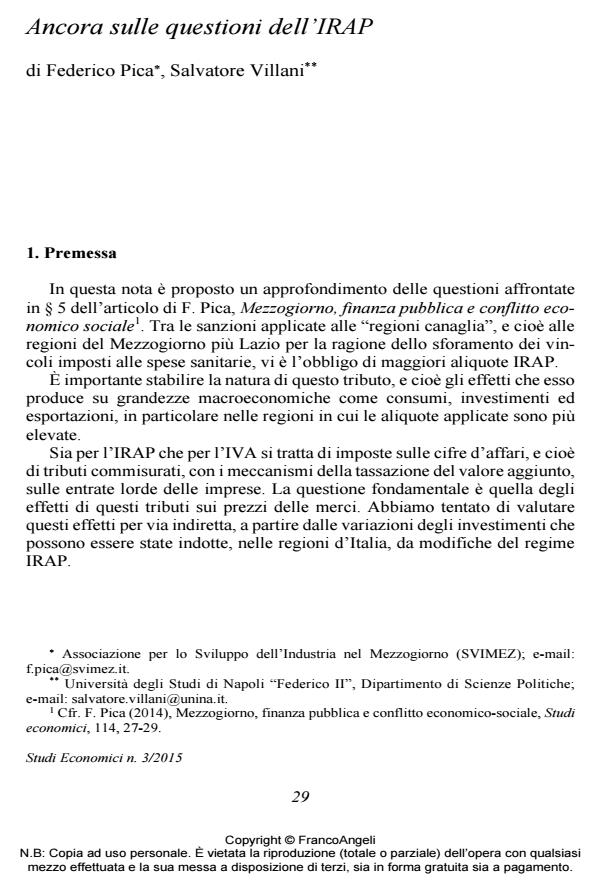Ancora sulle questioni dell’IRAP
Titolo Rivista STUDI ECONOMICI
Autori/Curatori Federico Pica, Salvatore Villani
Anno di pubblicazione 2016 Fascicolo 2015/117
Lingua Italiano Numero pagine 43 P. 29-71 Dimensione file 434 KB
DOI 10.3280/STE2015-117003
Il DOI è il codice a barre della proprietà intellettuale: per saperne di più
clicca qui
Qui sotto puoi vedere in anteprima la prima pagina di questo articolo.
Se questo articolo ti interessa, lo puoi acquistare (e scaricare in formato pdf) seguendo le facili indicazioni per acquistare il download credit. Acquista Download Credits per scaricare questo Articolo in formato PDF

FrancoAngeli è membro della Publishers International Linking Association, Inc (PILA)associazione indipendente e non profit per facilitare (attraverso i servizi tecnologici implementati da CrossRef.org) l’accesso degli studiosi ai contenuti digitali nelle pubblicazioni professionali e scientifiche
This paper offer a more in depth investigation on the issue of the nature and incidence of IRAP (the local business tax applied in Italy), namely on the effects that this tax produces on certain macroeconomic variables – such as consumption, investment and exports – in the regions where the rates applied are higher. In particular, it shows the results of a territorial and sectorial empirical analysis of the trend in investments accounted on the balance sheet by firms during the period 2006-2014. The analysis of the data of tangible assets, amortization and some balance sheet indicators of financial structure, profitability and tax incidence, suitably disaggregated by region and by sector, provides useful evidence in favor of the hypothesis of the forward shifting of this tax and its adverse impact on business investment in so-called “Scoundrel Regions” as well as in all regions which have deliberated pejorative changes in the ordinary tax rate.
Parole chiave:Tax incidence; local business taxes; value added tax; effects of taxation on business investment; regional economic development.
Jel codes:H22, H25, H32, H71, R11
- Ceroli P., Ruggieri M. (2013), L’analisi di bilancio per indici e per flussi. Profili teorici e dinamiche operative, Giuffrè, Milano.
- Coda V., Brunetti G., Bergamin M.B. (1980), Indici di bilancio e flussi finanziari: strumenti per l’analisi della gestione, Etas libri, Milano.
- Mella P. (1987), Gli Aspetti finanziari dell’ammortamento. Il processo di ammortamento analizzato nei suoi riflessi fiscali. Le relazioni tra cash flow e sviluppo aziendale, Contabilità & Bilancio, 33, 620.
- Mella P. (1993), Contabilità e bilancio, UTET, Torino.
- Mella P., Navaroni M. (2012), L’analisi di bilancio. Indici e flussi. Apprezzamenti e simulazioni, Maggioli, Santarcangelo di Romagna.
- Mella P., Navaroni M. (2015), Il Cash Flow. Efficace Strumento di Analisi di Bilancio, Economia Aziendale Online, 6(3), 99-114.
Federico Pica, Salvatore Villani, Ancora sulle questioni dell’IRAP in "STUDI ECONOMICI " 117/2015, pp 29-71, DOI: 10.3280/STE2015-117003